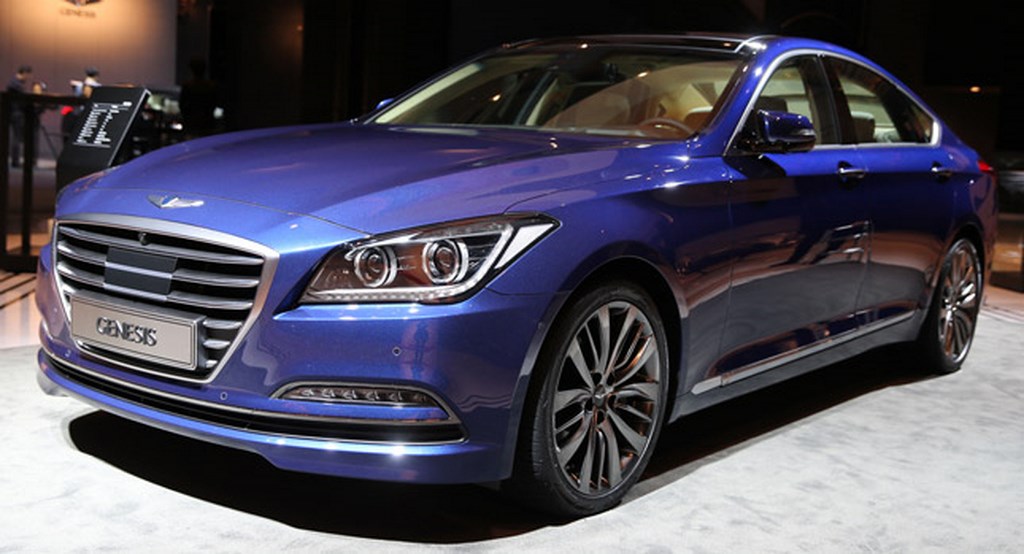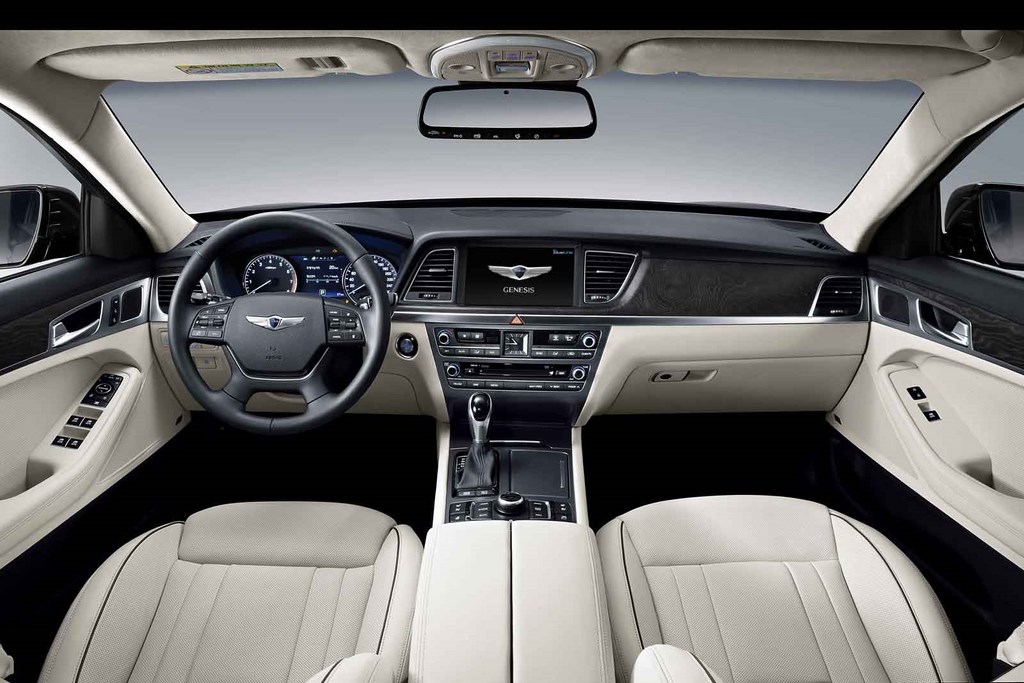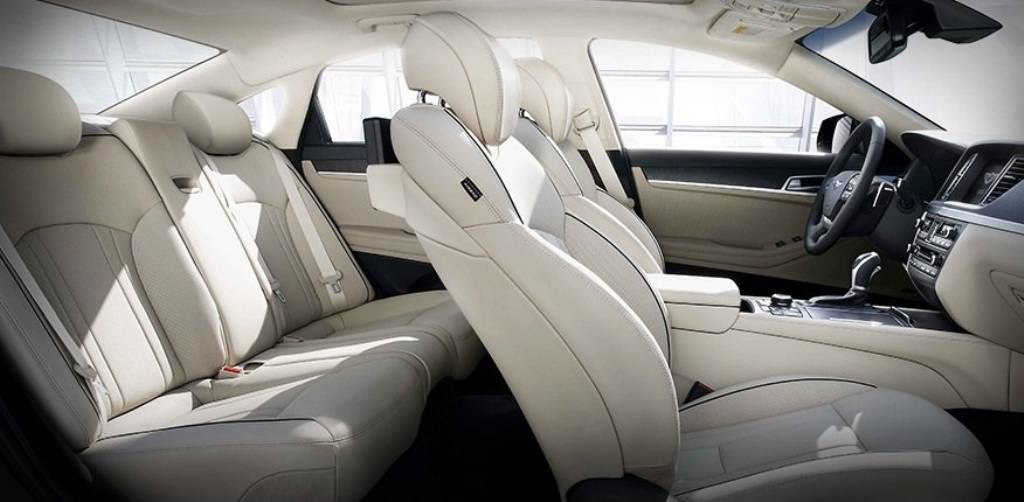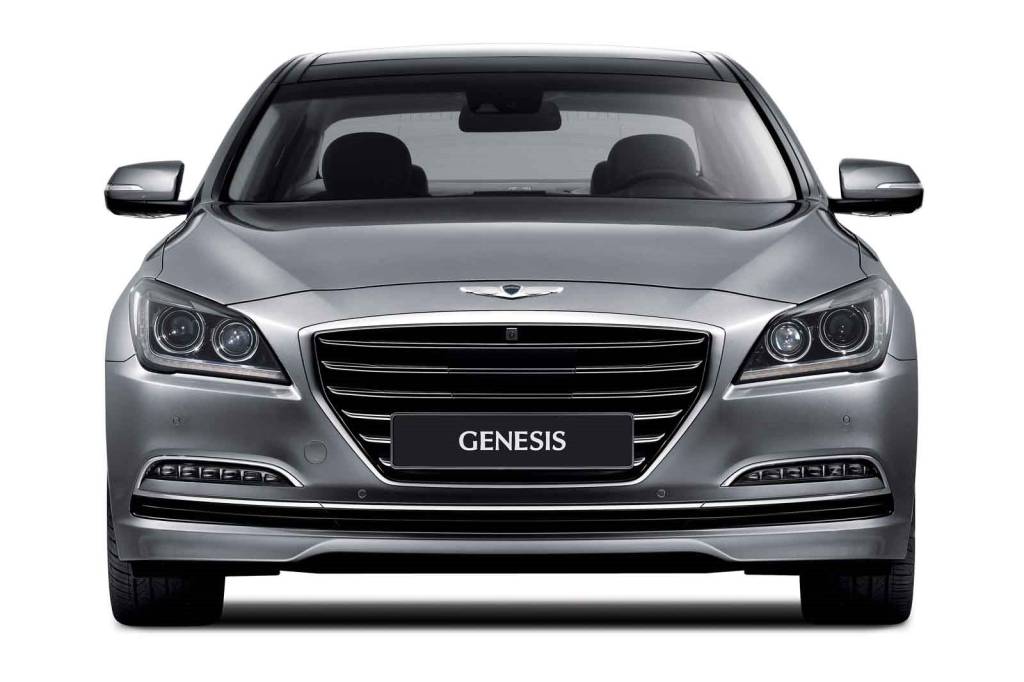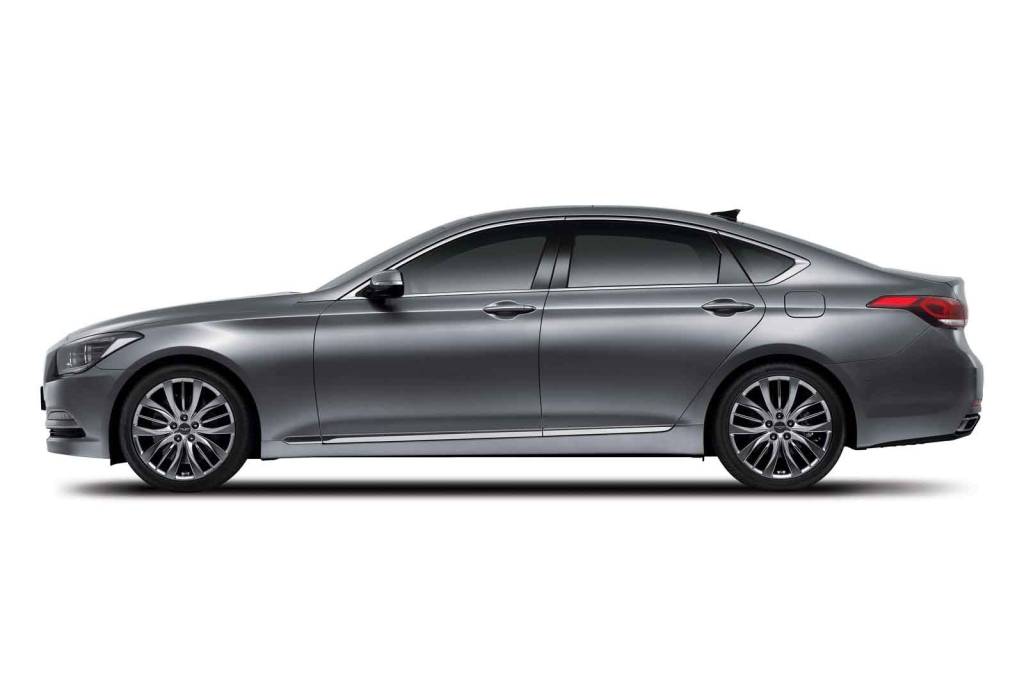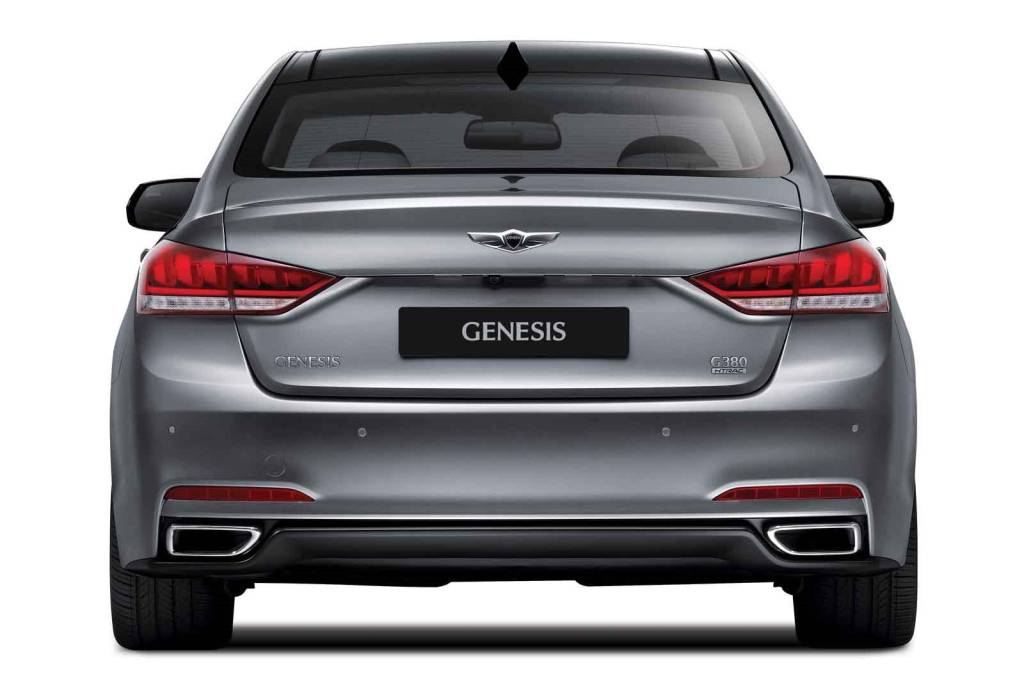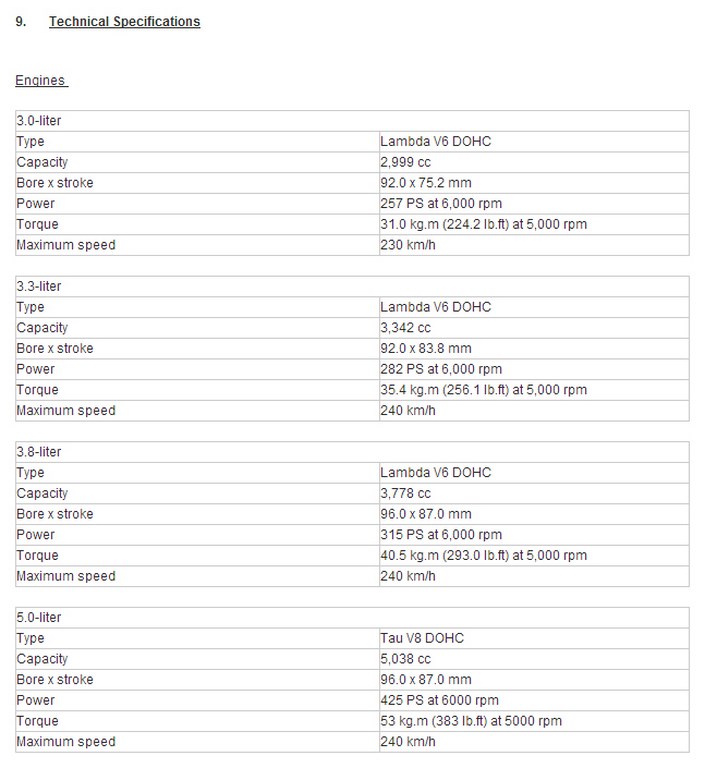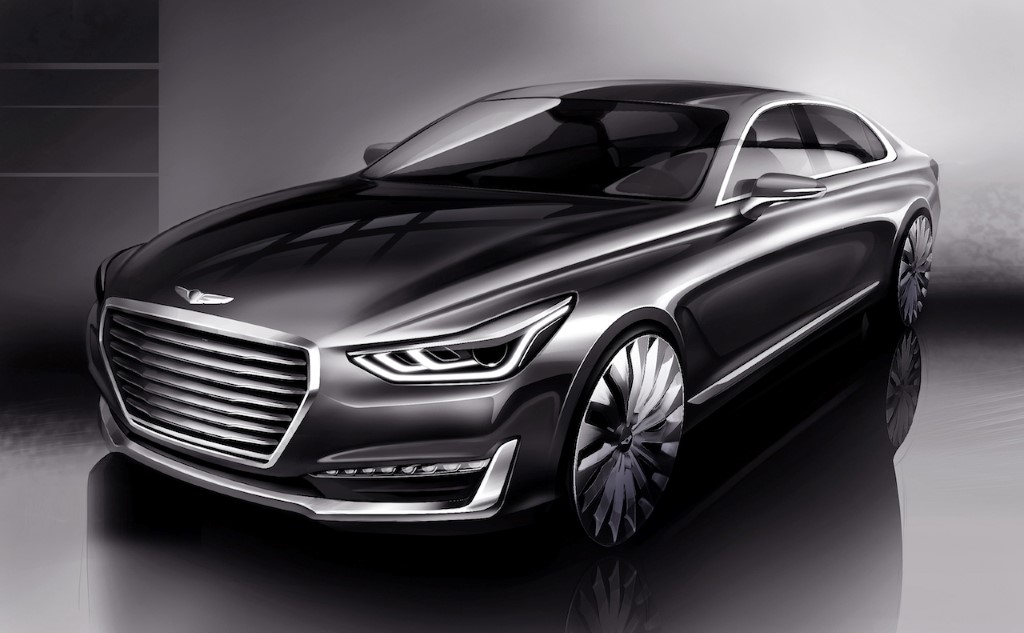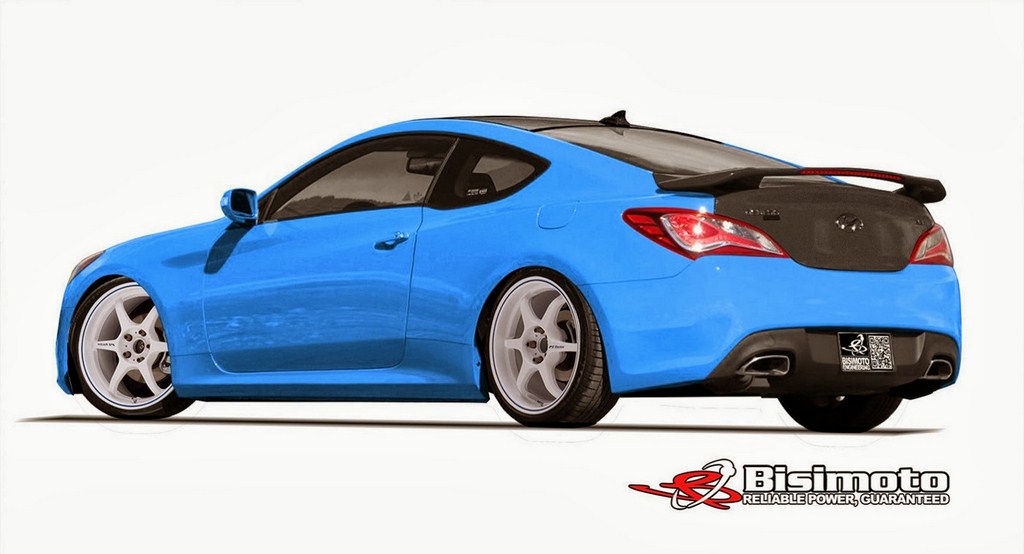Hyundai has finally unveiled the much-awaited 2015 Genesis in Korea. This is the second-generation of the vehicle and it is sold as a premium offering. The new Genesis features Hyundai’s “Fluidic Sculpture 2.0” styling which gives the car a very flowing and dynamic look. The hexagonal front grille is a significant feature of all the “fluidic” cars from Hyundai and it can be seen on the Indian versions of the i10, i20 and the Verna too. The other “fluidic” cars from the automaker are the Elantra and the Sonata which are offered in the premium car segments in the Indian market.
The 2015 Hyundai Genesis will come with many goodies like the the CO2 cabin sensor control and a whole lot of safety features such as Automatic Emergency Braking (AEB), Blind Spot Detection System and a radar-controlled Advanced Cruise Control. The vehicle also comes with a heads-up display (HUD) that is integrated beautifully. This premium sedan from the Korean manufacturer features a new HTRAC All-Wheel-Drive system and a multi-link rear suspension.
Hyundai has also tweaked all the four engines to generate more power and to offer better performance at low-mid RPMs. The 5.0-litre petrol engine is the quickest and makes the Genesis go from 0-100 km/hr in around 5.2 seconds and it churns out 419 BHP of power. The other engines which the carmaker provides are the 3.0-litre, 3.3-litre and the 3.8-litre petrol engines. All these powerplants are mated to an 8-speed automatic transmission.
Hyundai managed to get 3500 bookings on the day it started taking orders for the new Genesis. The manufacturer has set a target of selling at least 62,000 copies of the Genesis globally in the next year. Out of these units, around 30,000 would be meant for overseas markets. After its Korean launch, the Hyundai Genesis would make its way to other major markets globally next year which include North America, Middle East, China, Europe and Russia. Hyundai has no plans to launch the vehicle in India because frankly this vehicle would find no takers at the high price and people would rather opt for entry-level German cars which provide more snob value.


